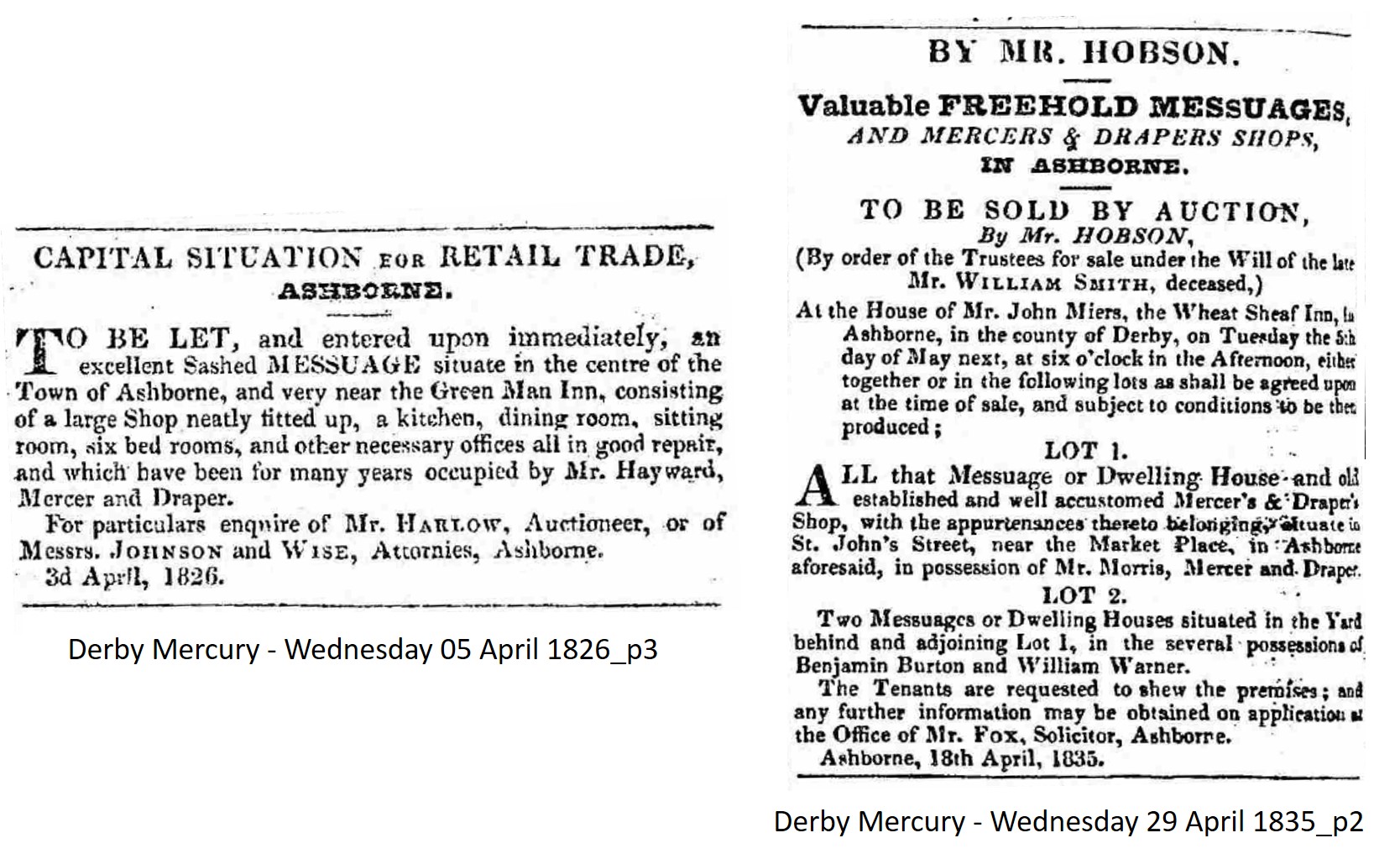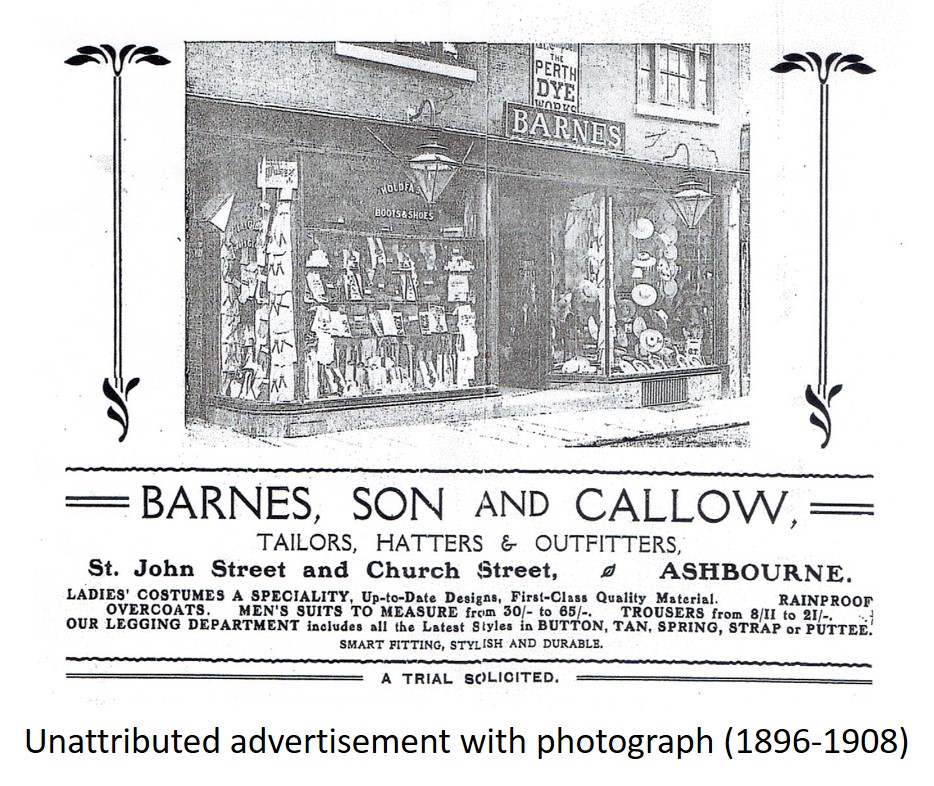
12 St John Street
Highlights
▪ Grade II listed building
▪ It was built in the late 18th century by Samuel Harlow, clock maker
▪ Draper’s and outfitter’s shop for more than 200 years:
➢ Charles Hayward c1810-25
➢ James Morris 1826-c1845
➢ Whittaker and Marple c1845-57
➢ John Barnes, Thomas John Barnes 1857-1909
➢ J. M. Callow 1909-2002
➢ Graves 2002-19
More information
Number 12 is on the south side of the street adjacent to Hood’s Yard which is named after the tailor who occupied 10 St John St in the late 19th andearly 20th century.
The Building
It is of late 18th century/early 19th century construction and is of red brick with eaves cornice and tiled roof. It has three storeys, and on the first and second floors there are two wide sash windows with margin lights and glazing bars. At the left/east side of the second floor there is a small corner window which is perhaps of a later date. The ground floor shop front is later.
The History of its Occupation and Use
The earliest records for 12 St John St date to 1770 when William Etches, who was a butcher, sold two old “messuages” to Ralph Harrison. These were then acquired by Samuel Harlow, clock maker, in 1787 who then set about rebuilding the property to what can be seen today. After Samuel Harlow moved to Birmingham in the late 1800s, the shop was tenanted initially by the draper Charles Hayward.
In 1826, Charles Hayward moved to part of the old Blackamoor’s Head at 18-20 St John St and the property was advertised to let (see below left). The advertisement describes the property as follows:
“…consisting of a large shop neatly fitted up, a kitchen, dining room, sitting room, 6 bedrooms, and all other necessary offices all in good repair, and which have been for many years occupied by Mr. Hayward, Mercer and Draper.”
Taking Charles Hayward’s place was another draper, James Morris. It appears that in 1828, the property was sold to William Smith, grocer, and the 1846 tithe records show that the owners at this time were Harriet Baker and Fanny Smith, both of whom were William’s sisters. William had passed away in 1835 and at that time the property had been put up for sale while James Morris was stil lthe occupant (see below right).

James Morris continued as the tenant until 1842 and then the following year, 1843, Whittaker & Marple (William and William Robert respectively), opened their draper’s shop. They were succeeded in 1857 when John Barnes, yet another draper, purchased the property and ran his own business. The business became the “general outfitters” John Barnes & Son and then T(homas) J(ohn) Barnes in the 1870s-80s and by 1896 John Moore Callow was taken on as a partner and it became Barnes, Son & Callow.


When T. J. Barnes retired in 1909, the business became J. M.Callow, outfitters, which continued in business for over 90 years.

The shop then became Graves of Ashbourne in 2002. Graves closed their doors in 2019 and the shop is currently empty.
The shop then became Graves of Ashbourne in 2002. Graves closed their doors in 2019 and the shop is currently empty.

© Paul Thompson 2025
Photograph taken of the empty shop in July 2024. Note “J. M. Callow Clothier and Outfitter” on the door.
You may also be interested in...
